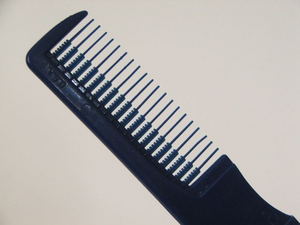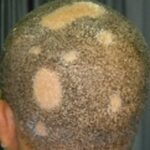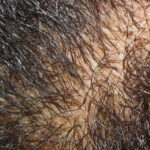Although hair thins as we get older, many men start losing their hair right after puberty. About 95 percent of hair thinning in men is due to androgenetic alopecia, also called male pattern balding. It is caused by male hormones and inherited genes. Hair thinning in men follows a distinct pattern of hair loss. Hair starts thinning by forming an M-shaped hairline. Then hair at the crown starts to thin until the thinned crown and hairline meet.
Genetics and over-production of dihydrotestosterone (DHT) in the hair follicle is one of the major causes of hair loss,” explains Dr. Marta Rendon, founder and medical director of the Dermatology & Aesthetic Center in Boca Raton, Fla., and the Global Celebrity Dermatologist for Head & Shoulders. Recently, some, but not all, of the genes involved in male hair thinning have been identified. Other environmental factors such as nutrition, disease, stress and hair care may also impact hair thinning.
DHT causes hair thinning by shrinking the hair follicle. Hair grows from follicles embedded in the skin. The hair root is enclosed in the follicle and contains the dermal papilla, which is rich in blood vessels and nerves and produces the hair. The hair itself is made up of dead cells, filled with a hard substance called keratin. The dermal papilla has receptors for the male hormone DHT. Men are more susceptible to androgenetic alopecia than women because they have high levels of circulating testosterone, a male hormone made in the testes. When testosterone reaches the hair follicle, an enzyme, 5-alpha reductase, within the follicle converts testosterone to DHT. DHT binds to the androgen receptor on the dermal papilla and causes the follicle to shrink. Because androgenetic alopecia causes a distinct pattern of hair thinning, some hair follicles may be more susceptible to DHT than others.
Normally, each strand of hair grows for two to six years and then rests for several months before it falls out and a new hair starts growing. When DHT causes the follicle to shrink, hair thins and each hair becomes finer. Each hair also grows for a shorter period and rests for a longer time in between growth cycles. This causes each hair to become shorter in length. Once these thinner and shorter hairs fall out, they may not grow back.
An irritated scalp can also be a cause of thinning hair. When the scalp is not healthy, it is difficult for hair follicles to grow in strongly. This may result in weaker hairs falling out.
Besides androgenetic alopecia, other causes of hair thinning are alopecia areata, tinea capitis (ring worm) and citatricalial alopecia. Alopecia areata is believed to be an autoimmune disorder, when the body makes antibodies to its own hair. Tinea capitis is a fungal infection that causes scalp swelling, redness and oozing. Cicatricial alopecia is also called scarring alopecia. It is an inflammation of the hair follicle of unknown origin and causes patchy hair loss, itching and pain.
Sources
Richards, J.B. et al. Male-pattern baldness susceptibility locus at 20p11. Nat. Genet. (2008) 40: 1282
http://www.follicle.com/hair-structure-life-cycle.html
http://www.americanhairloss.org/men_hair_loss/




